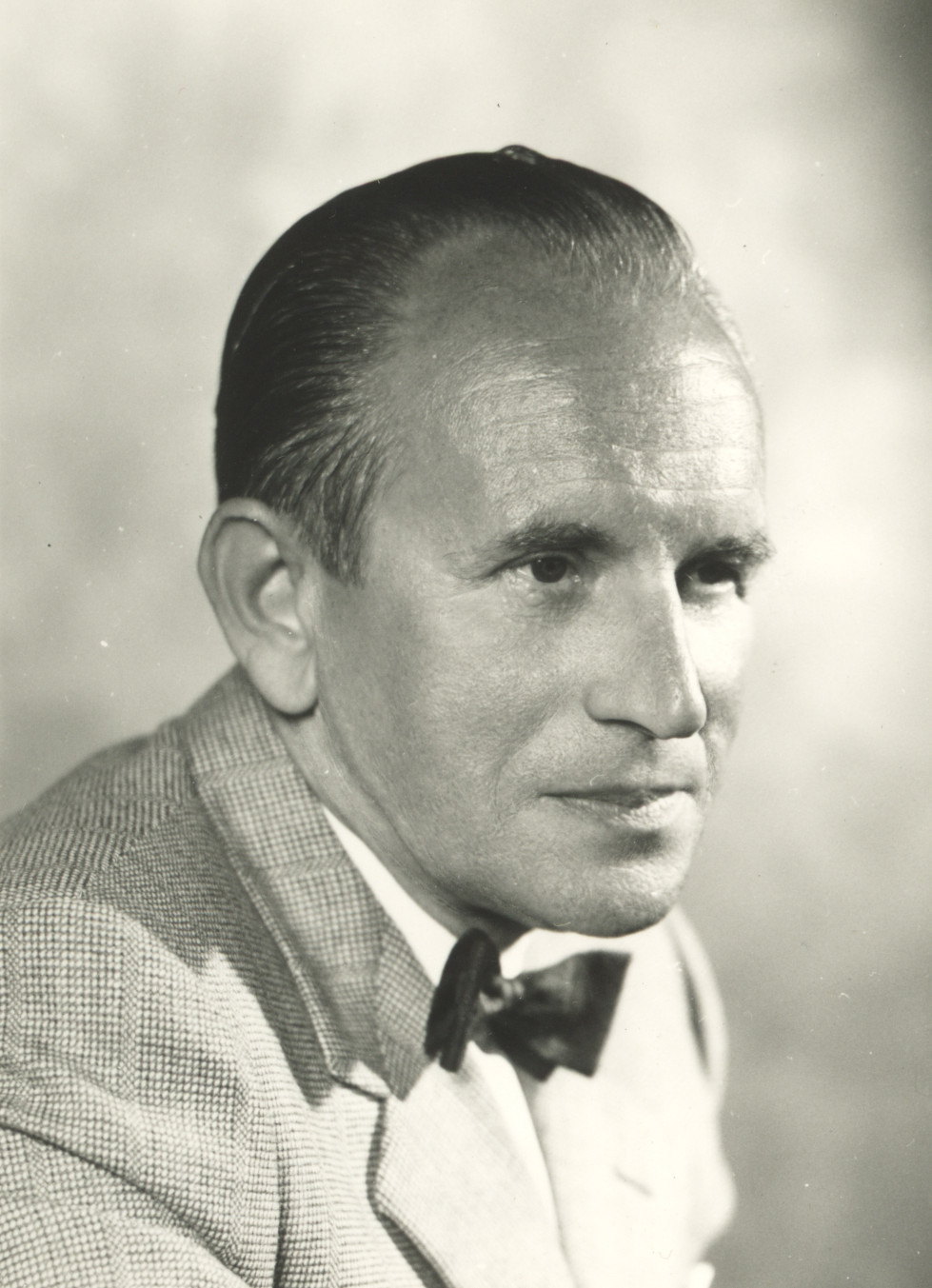
Edgar Valter Saks
Edgar Valter Saks (25. I 1910–11. IV 1984) was a politician, publicist, economist, amateur historian, and writer.
Saks was born the son of a mechanic. In 1928, he graduated from Hugo Treffner gymnasium in Tartu and in 1934, from the law department of the University of Tartu. He worked as a journalist at various jobs (from 1929-1934 he was employed in the editorial board of Päevaleht newspaper in Tartu), then as a civil servant and an industry manager.
In 1944, he escaped to Finland from Estonia. From 1944-1949, he lived in Sweden and from 1949, he resided in Canada. He worked in Canada, Peru, and Mexico. Saks was active in several Estonian expatriate organizations and was one of the founders of the Estonians’ Union in Canada, the chairman of the Estonian Society of North Canada, and from 1971-1984, he was the Minister of Education of the Estonian government-in-exile. He was the publisher and a member of the editorial board of the two-part almanac Eesti looming (‘Estonian Works’, Helsinki 1944) and the founder and editor-in-chief (1944-1948) of the weekly newspaper Välis-Eesti in Stockholm. From 1931, he was a member of the Estonian PEN Club and in 1933, joined the Estonian Writers’ Union.
Before World War II, Saks wrote four novels. The first one was Kodutu (‘Homeless’, 1929) which came third in the novel competition by Loodus publishing house. The following three novels Jaan Tamar (1932), Armuke (‘Lover’, 1936), and Hannibali rahvas (‘The People of Hannibal’, 1936) were not warmly received by readers or critics. His prose includes good descriptions of settings, but the characters’ psychology was secondary to him. The historical novel ‘The People of Hannibal’ features the events of the Livonian War and is noteworthy for glorifying Estonian war heroes. Saks also wrote short stories that were published in the magazine Looming and almanac Eesti Looming (‘Estonian Works’).
From the point of view of literary history, Saks’ study of the university years of Ernst Enno in Riga (Eesti Kirjandus publishing 1935) and the nine interviews with Estonian writers published in the magazine Looming in 1936 are significant.
In exile, the author dedicated himself to the questions of Estonian identity and history and published several popular science books that glorified Estonians’ prehistory and that professional historians consider pseudoscientific. Saks was a nationalist and decidedly against any leftist or Marxist dispositions.
L. P. (Translated buy A. A.)
Books in Estonian
Novels
Kodutu. Tartu: Loodus, 1929. 246 lk.
Jaan Tamar. Tartu: Loodus, 1932. 200 lk.
Armuke. Tartu: Eesti Kirjastuse Kooperatiiv, 1936. 249 lk.
Hannibali rahvas: ajalooline romaan Liivi-Vene sõjast. Tartu: Postimees, 1936. 294 lk.
Õigusenõudjad: Eesti rahva võitlusromaan. Tallinn: Grenader, 2013. 236 lk.
Historical research
Eesti soost vasalkond. Jüriöö mäss: revideerivaid seisukohti ürikute alusel. Philadelphia; Wilmington: Korporatsioon Rotalia BWW allkoondis, 1971. 34 lk.
Saxi-Saxa-Sax-Saks: nimikond ja suguselts: genealoogiline uurimus. Montreal: 1979. 108 lk.
Eesti viikingid. Tallinn : Olion, 2003. 224 lk.
Metsalise märgi all: punane paradiis: ühe epohhi kroonika. Tallinn: Grenader, 2012. 159 lk.



